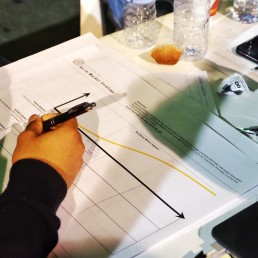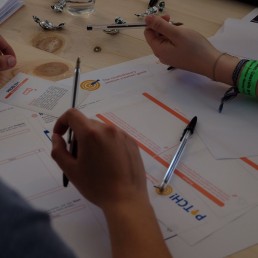Prototyping
After you developed your business model, you will have to think about a prototype of your product or service. The ultimate goal of a prototype is to ‘answer questions and to generate new ones’. In this sense, a prototype is a plan for how it works; a physical test-version of a product, service or process used to develop, test and communicate ideas and concepts, which has multiple benefits:
- Establish a clear understanding internally;
- Validate your idea with real users;
- Communicate your idea to the market;
- Make decisions based on real feedback;
- Shape your idea into a business.
What happens when ventures fail to prototype and go straight to execution?
- Excessive spending;
- No solid understanding of customers’ needs and wants;
- Lack of business model hypotheses testing.
This was the case for Webvan, an online grocery store founded in 1996 that went bankrupt in 2001. Why?
- Failed to spend enough time discovering who their real customers were. Webvan unrealistically planned to expand to 26 cities in the US within 5-years, but failed to prove their business model in the first market where they launched.
- Aggressively invested on building its own infrastructure from scratch, including multiple high-tech warehouses worth $30 million each, with no other backup revenue streams.
- Blind by the ‘get-big-fast’ philosophy, Webvan highly underestimated the value of a trial and error approach to finding the right business model and market.
Based on framing and testing critical business model hypotheses, prototyping multiple business models is an essential process to successfully launching your digital business idea. So, what are business model hypotheses?
What are business model hypotheses?
Business model hypotheses are the key assumptions that must be true for your business model to work. These are the riskiest elements in your initial business model that must be tested and validated with minimum effort and resources.
What are some of the riskiest assumptions commonly identified in business models?
Customer segment and problems
Is the level and frequency of the customer’s pain strong enough for them to urgently need your solution? Are you targeting the right customer segment?
Value proposition
Does the solution create value for the end users, for the economic-buyer, for other key stakeholders?
Customer channels
Which channels should you use to reach and serve end-users and economic buyers? Furthermore, what is the value you are creating for channel partners?
Price and margin
What do you think is an acceptable price, what an expensive price and which a prohibitive price for this innovation?
Now that you are aware of what business model hypotheses are and how these translate into risky assumptions, it is important to understand how to test and validate these assumptions with minimum effort and resources. This you will learn in our next Smart Hub Article.
Excited to translate your business idea into a scalable business model?
Simply sign up now to access our tutorials, videos and tools that guide you through the art of creating and testing winning business models.
All this, and a lot more – for free!







